
- Home
- India
- World
- Premium
- THE FEDERAL SPECIAL
- Analysis
- States
- Perspective
- Videos
- Sports
- Education
- Entertainment
- Elections
- Features
- Health
- Business
- Series
- In memoriam: Sheikh Mujibur Rahman
- Bishnoi's Men
- NEET TANGLE
- Economy Series
- Earth Day
- Kashmir’s Frozen Turbulence
- India@75
- The legend of Ramjanmabhoomi
- Liberalisation@30
- How to tame a dragon
- Celebrating biodiversity
- Farm Matters
- 50 days of solitude
- Bringing Migrants Home
- Budget 2020
- Jharkhand Votes
- The Federal Investigates
- The Federal Impact
- Vanishing Sand
- Gandhi @ 150
- Andhra Today
- Field report
- Operation Gulmarg
- Pandemic @1 Mn in India
- The Federal Year-End
- The Zero Year
- Science
- Brand studio
- Newsletter
- Elections 2024
- Events
Why Patan Patola is the Hermes of saris

Nirmal Salvi doesn’t care about press coverage, he didn’t have any invites sent out, nor did he send press kits, press releases, and thus very few journalists came to see the mastery of his craft. Nirmal’s client roster says it all. From Prime Minister Narendra Modi, philanthropist, businesswoman and wife of Asia’s richest businessman’s wife Nita Ambani, they all wear handmade...
Nirmal Salvi doesn’t care about press coverage, he didn’t have any invites sent out, nor did he send press kits, press releases, and thus very few journalists came to see the mastery of his craft. Nirmal’s client roster says it all. From Prime Minister Narendra Modi, philanthropist, businesswoman and wife of Asia’s richest businessman’s wife Nita Ambani, they all wear handmade Patolas by the Salvi family from Patan, Gujarat.
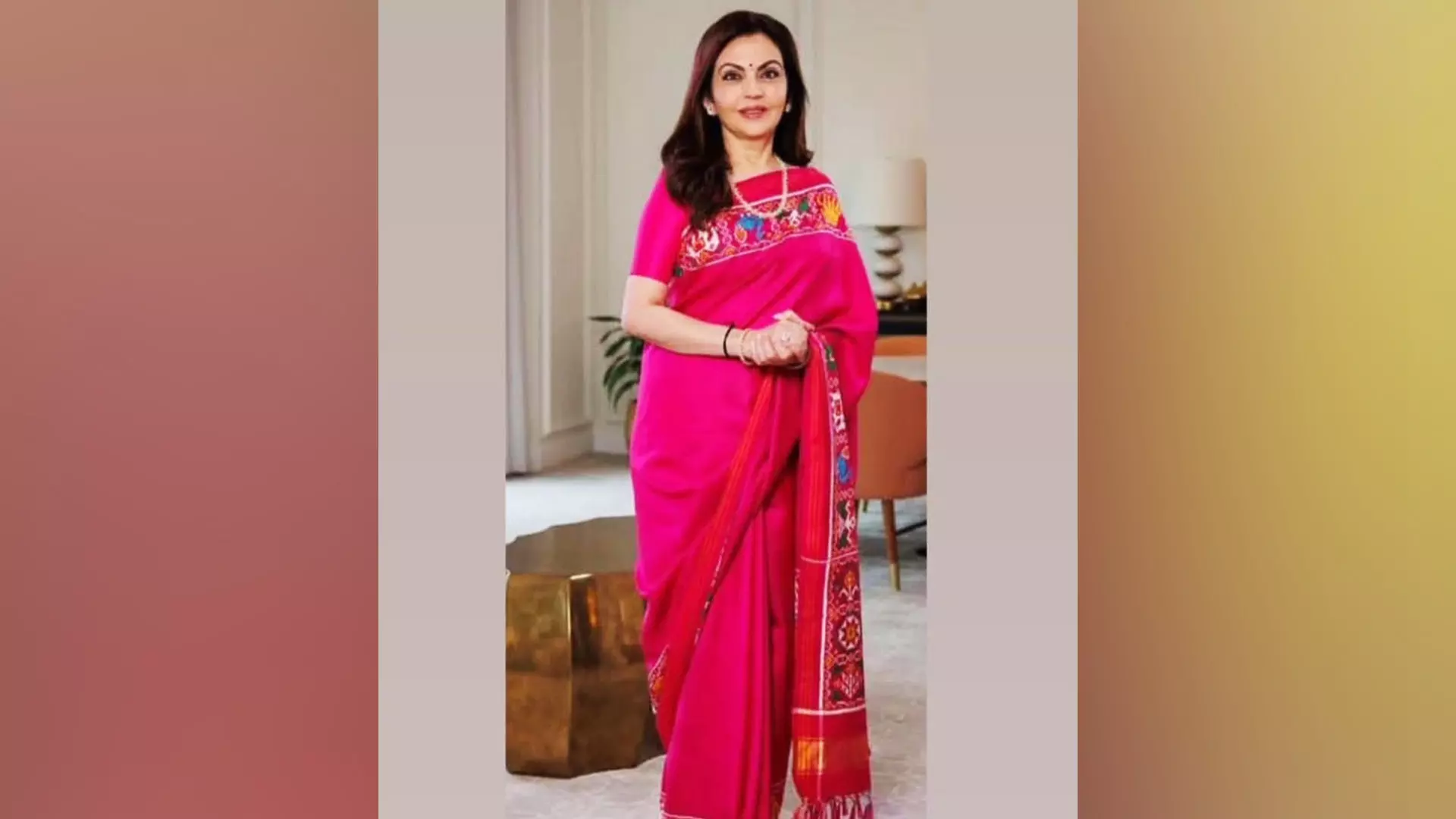
Nita Ambani in a Patola sari.
Nirmal’s is the only three left of the surviving families, who have been weaving Patan Patola for the last 1000 years, in Gujarat. The technique is almost 2,000 years old (12 AD). There were more than 700 families in this trade, who slowly vanished due to the advent of power looms, loss of jobs, crafts not being given the respect, and lack of patronage.
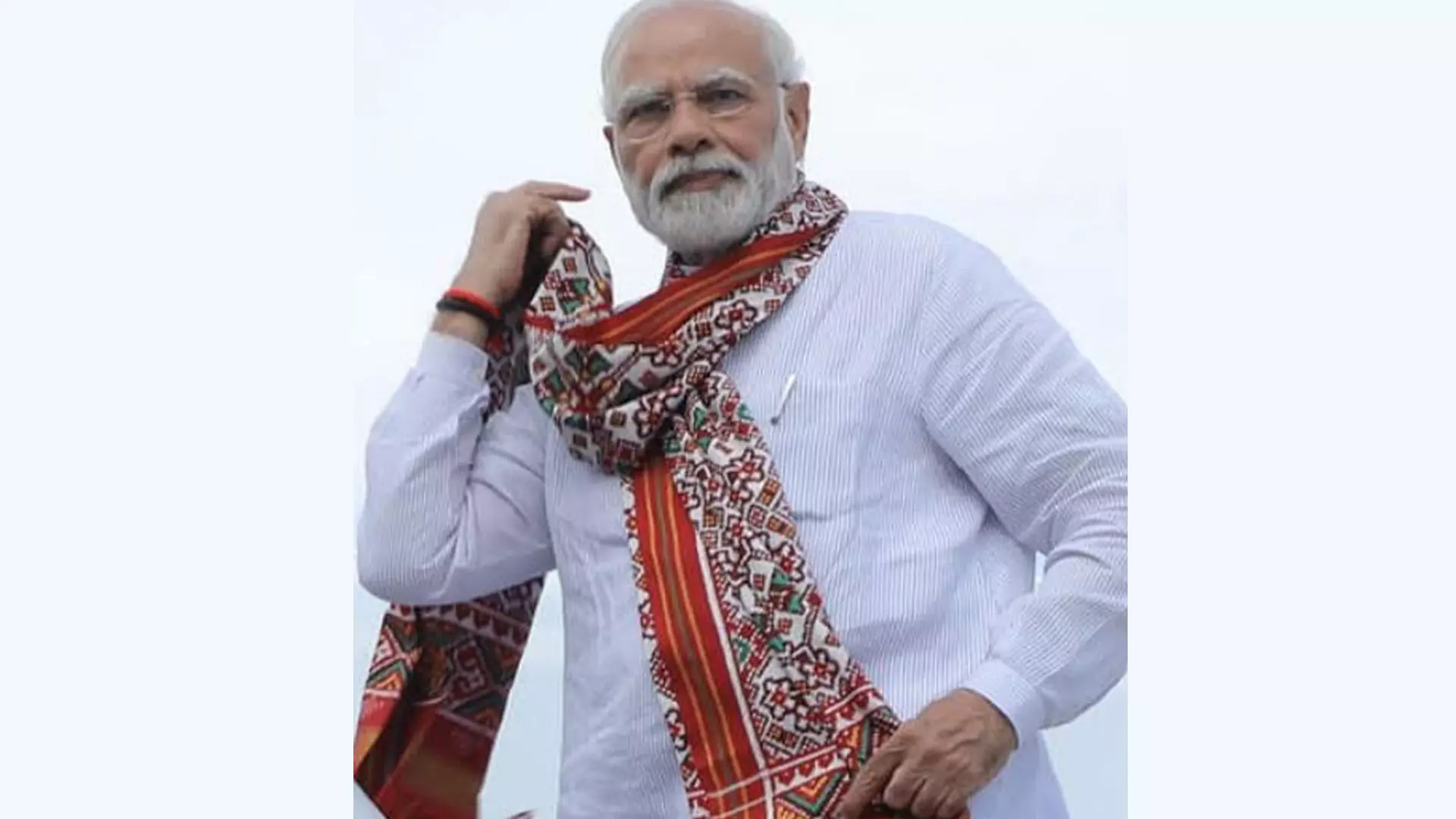
Prime Minister Narendra Modi wearing a Patola stole.
Nirmal has been a frontrunner in taking Patola out of Gujarat to metropolitan cities to serenade a younger customer, in turn preserving a dying craft. His new store in the capital, third of its kind, after Ahmedabad and Mumbai, has become the talk of the town. Dhwani, who works as a fashion designer with Nirmal says, “Some of the biggest clients from the city used to come for our exhibitions to buy, this store will enable easy access.”
Patan has a rich history, it is steeped in heritage, the entire sari is handmade, in mulberry silk, which Nirmal procures from Bengaluru, all his saris are (GI) approved, (sign used on products that have a specific geographical origin). “The Salvis came from Jalna (Aurangabad) to Patan in the 12th century, Patolas were produced in Mungi-Pattan, and the Salvis belonged to the Digambar cult, proposing non-violent clothes. Patola is the king of textiles, as its accuracy on the loom makes it enviable,” Nirmal tells The Federal.
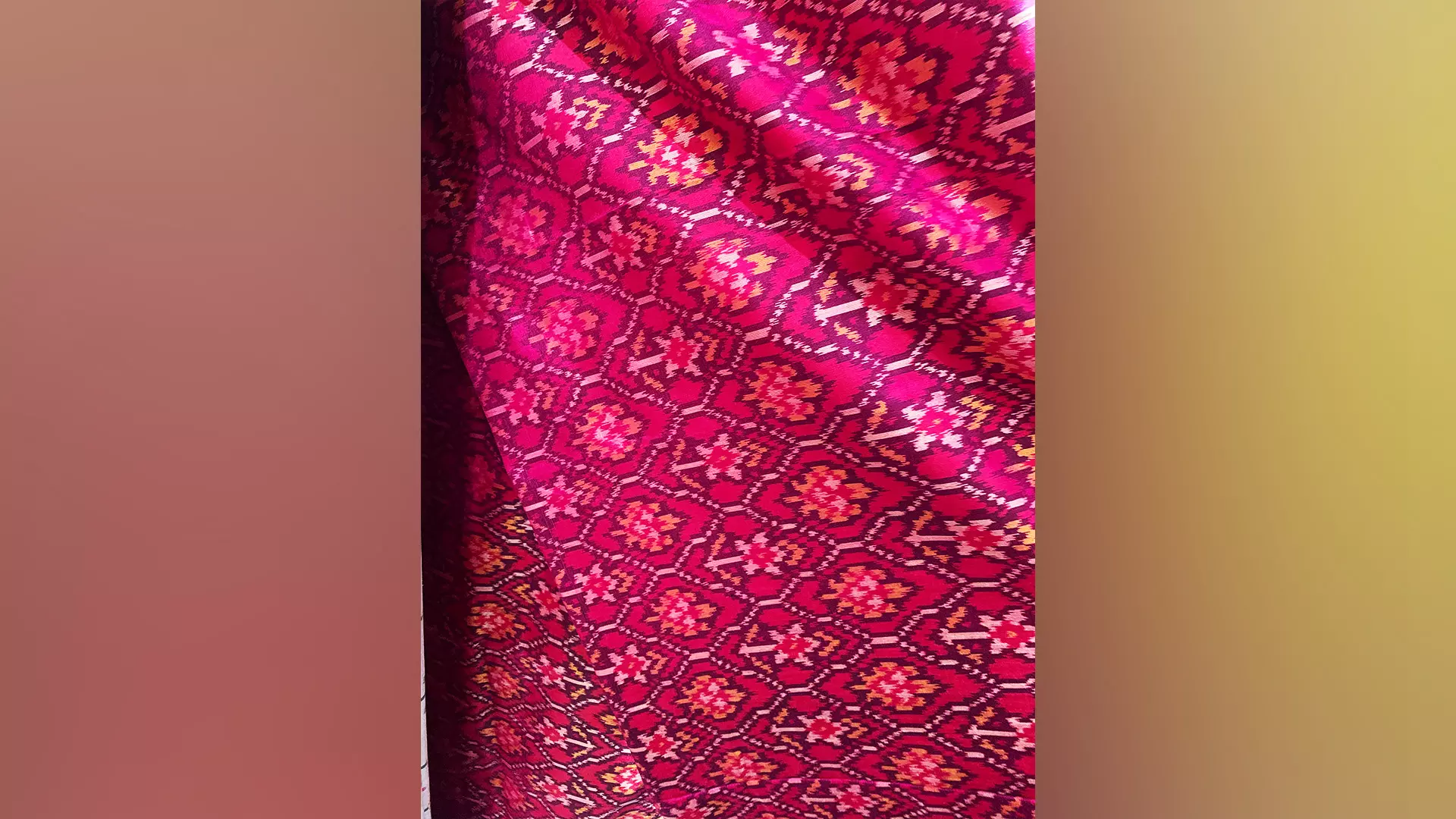
A Patola takes around six months to a year to weave.
Double Ikkat Patola is executed on a slant loom, dyed before weaving, both warp and weft are resist dyed using azo free dyes. Patola looms are different from frame looms, it has only a frame with no mechanical motions, made from rosewood and bamboo.
“A patola takes around six months to a year to weave, and from making graphs, to border-pallu, each has complex mathematical calculations, to get the right pattern. The beauty is that there is no front or back, it is the same, saree can be worn from all four sides,” says Nirmal.
The colours don’t fade, says Kamyani Jalan, President of the Delhi Crafts Council, and Nirmal holds the GI 232 certificate from the government for authenticity. They use natural dyes — madder, indigo, manjistha (medicinal herbs), myrobalan, marigold, annatto seeds, lac, and pomegranate peels. “I’m personally passionate about textiles, and Nirmal has offered us the most sacred saris which have generational value,” she adds.
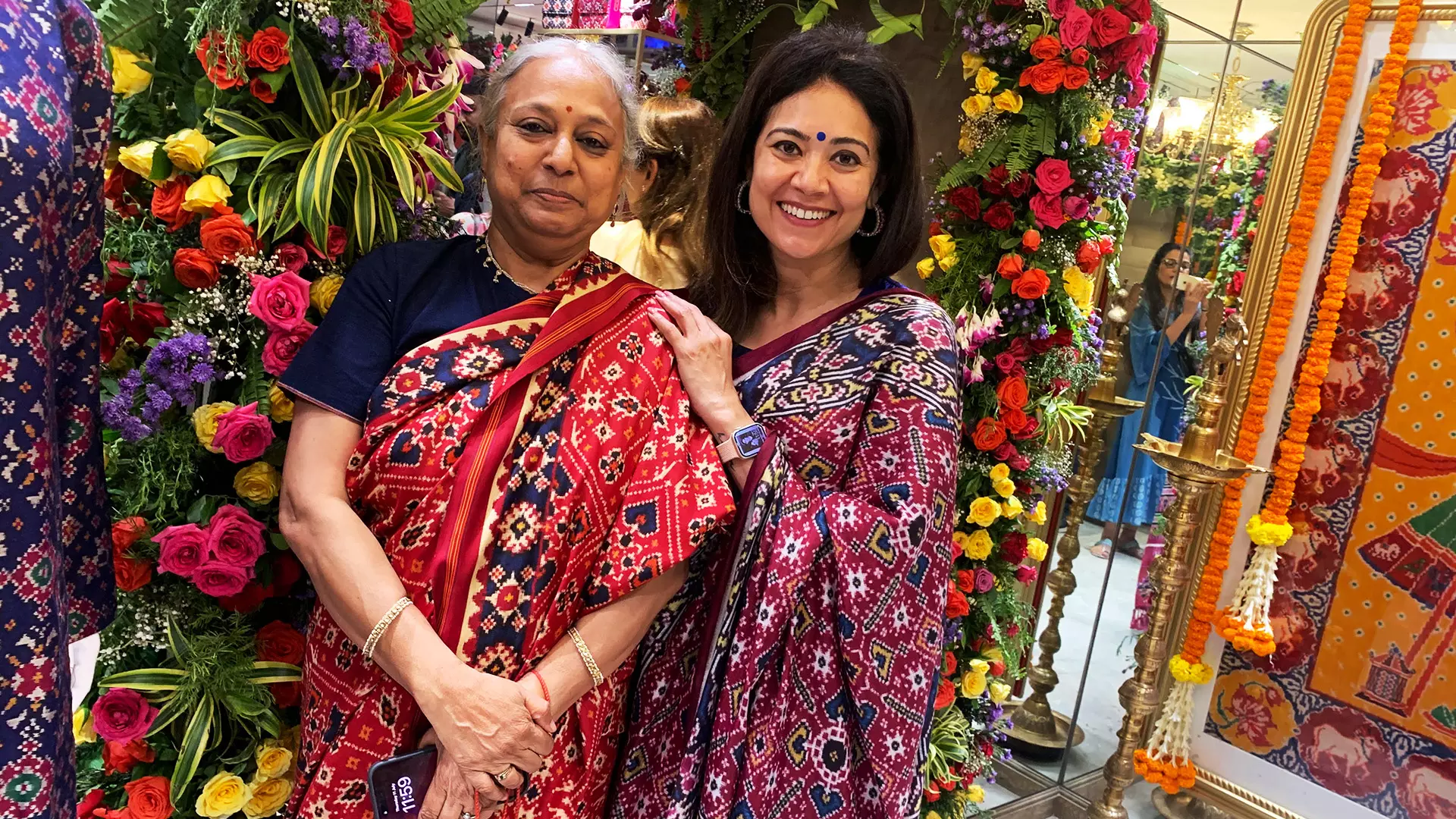
Kamyani Jalan with Radhika Bharatram.
Radhika Bharat Ram, vice chairperson of the Shri Ram Schools, believes Patola is unadulterated luxury, and many are unaware of the long, hand done process, using looms developed 2000 years ago. Amazingly those mechanical processes still work. “No technology is used in the process of making a sari, which is the most interesting aspect. I see a greater appreciation of this craft, now. A Patola is a must for a trousseau,” she adds. Radhika has some she inherited from her mother, grandmother, mother-in-law and some she bought herself, but there is always a longing for more.
Two weavers, if they start work, the warp and weft require such concentration, they can only weave ten inches per day. If you look closely, Patola seems like a fuzzy print, but it is a weave, many engineers in Japan and America have tried to set Patola on machines, but they have been unsuccessful.
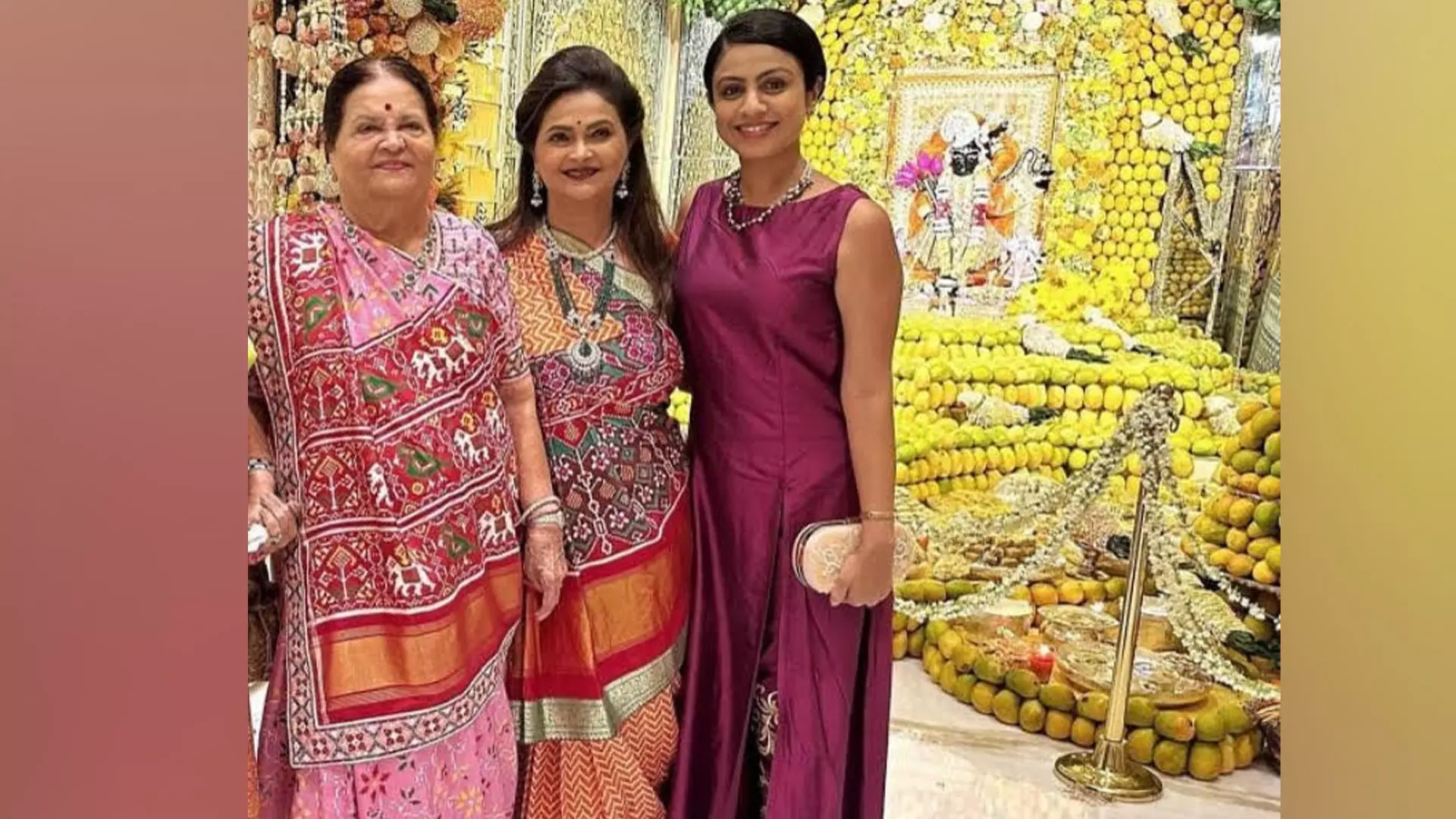
Mukesh Ambani's mother Kokilaben in a Patola sari.
Nirmal admits 900 years ago Patola was woven in silk, before that cotton was used, it is more like a coveted Hermes bag, there is a waiting to get it, as the process is laborious. “Wearing a Patola is power dressing, it adds confidence to your demeanour, it has been on many people’s wish list, it is desired similarly to a pure zari Banarasi or a Kanjeevaram, which have withstood the test of time,” says Radhika.
Dhwani, who studied fashion design from INIFD, Ahmedabad, and has been working with Nirmal for the last five years, admits the single thread dyed patola starts from Rs 65,000 (a stole), in natural dyes using traditional shades of red, white, yellow and pink. The motifs are ancient —peacocks, elephants, sparrows, or the nari kunjar (where you have a woman woven inside the sari, in the centre), or the Navratan, an exclusive display of weaving perfection.
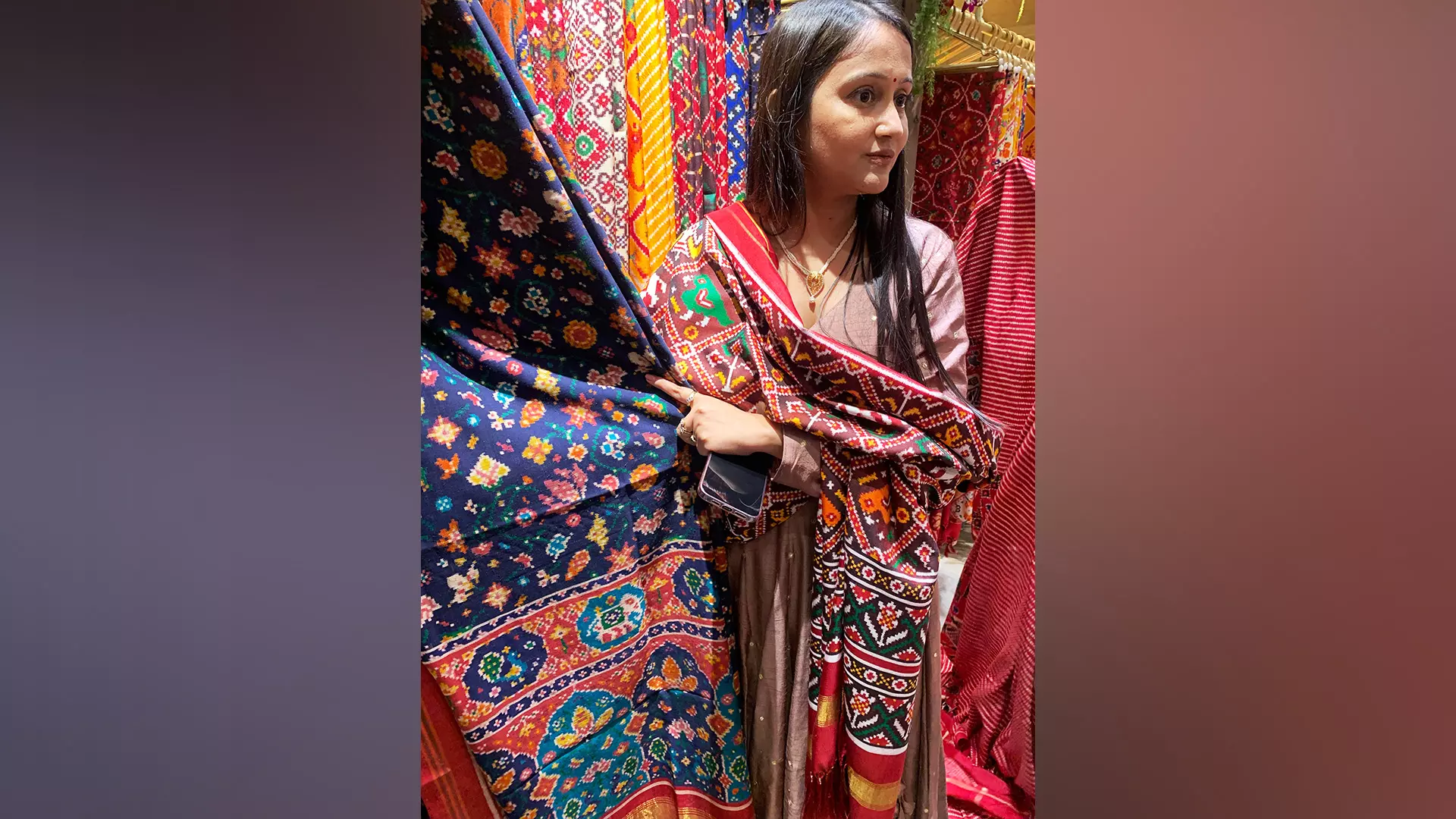
Dhwani, who works as a fashion designer with Nirmal.
In keeping with how GenZ wants to dress, Nirmal is getting Patola out of its strictness, and offering salwar-suits, with shimmer, which start from Rs 1,80,000, due to yet complicated patterns involved in its making. However, the real magic begins with the double Patola, which costs Rs 3 lakh, and above for a sari.
Here is the catch — you can have a Patola sari with chemical dyes too, for just a lakh, (stole Rs 14,000). But Dhwani admits, the natural ones will look dull, the chemically dyed ones have a shine, one immediately knows which one you are wearing.
Nirmal has close to 500 weavers back home in Patan, and believes everyone should get a piece of this classic fabric in their wardrobe. Forward thinking, he launched a range of pocket squares, ties, waistcoats, potlis, clutches starting from Rs 10,000 onwards. “We have also begun experimentation, but weaving a hybrid sari — combining a Patan with a pure Banarasi. A pure Patan dupatta will cost you up to Rs 65,000,” he adds.
Dhwani reveals, they can also customise giving you the option of an anarkalis to shararas, to include diverse customers and get them into the fold. “I don’t need a PR, my product is enough,” says Nirmal, seeing how the small store was bustling with buyers, it seems he is right. “The Vora caste in Gujarat, and Jains consider this essential to give the bride in wedding as it a symbol of purity. We still use manual graph papers, in the West slow is the new direction, labels are adopting, which we have been following from the beginning,” he concludes. Aping the West is part of Gen Z DNA, the key to Patola surviving, will happen only if they abandon the lust for a Hermes and buy a heritage piece instead.
